Maurice Denis
(1870-1943)
Few sacred artists have been as sure of their vocation so early in life as Maurice Denis. At 15, he noted in his journal: “I have to be a Christian painter and celebrate all the miracles of Christianity, I feel that it has to be so.” Denis’ life and career would prove his commitment to religious art. The French painter, muralist, and print-maker made his debut at the Independent Artists’ Salon in 1891 with a pointillist-styled Annunciation scene, Mystere Catholique, and was working on the interior decorations of the basilica in Thonon-les-Bains, Haute-Savoie, when he was killed in a traffic accident in 1943. The years in between witnessed an out-pouring of sacred imagery by Denis only equaled in the 20th century by his compatriot, Georges Rouault.
Denis was as much a theoretician and art historian as a painter and wrote a magisterial survey of Christian art, Histoire de l’art religieux (1939). He is best remembered today for his declaration in 1890 that painting is “basically a flat surface covered with colors disposed in a certain order,” a credo taken up by later Modernists. Denis was involved, at the time, with a collective of avant-garde artists, known as Les Nabis (from the Hebrew-Arabic word for “prophet”), who wanted to manipulate reality in their art for decorative and emotive ends and uncover personal metaphors and symbols in the visual world. Denis would adopt what he considered a more “classical” style later in his career after a sojourn in Italy, always believing art should “express the mysteries of the Faith clearly in the play of forms and colors.”
A devout Roman Catholic, Denis was single-minded in his effort to renew French church art, which had degenerated in the 19th century into what was dismissively called the “Saint-Sulpice style,” after the Paris quarter, specializing in kitsch plaster saints and devotional items. Together with Painter Georges Desvallieres, he founded Ateliers d’Art Sacre in 1919 to teach young artists to create works “that serve God, the teachings of the truth and the decoration of places of worship.” Denis, himself, made canvas paintings and wall murals for over 15 churches across France. A set of heliogravures in the Sacred Art Pilgrim Collection shows the Stations of the Cross cycle he painted for the chapel in Le Prieure (the Priory), an old hospital in Saint-Germain-en-Laye, which the artist converted into his home and studio.
There is a feeling of great intimacy in Denis' religious art. A devoted husband and father, the artist often used his beloved first wife, Marthe, and their six children as models, placing sacred figures in settings from his daily life in Saint-Germain-en-Laye, the Breton seacoast, where the family spent their summers, or an Italian villa they had visited in Fiesole, near Florence. Denis was especially drawn to maternal images of the Virgin Mary, making paintings and prints of the Annunciation and the Madonna and Child in multiple variations. The Sacred Art Pilgrim Collection has a sketch of Mary for a 1907 Annunciation scene, set in Fiesole, and a lithograph, derived from a 1912 painting on the same theme. There are, also, three lithographs and a colored wood engraving of the Madonna and Child, as well as colored wood engravings of Pieta and First Communion, where Mary appears as the Mother of the Church.
The tireless Denis was the prolific illustrator of some 50 books, making over 200 prints in his own hand along with designs and drawings for others to copy. He often collaborated with Wood Engraver Jacques Beltrand and his father, Tony, who led the group of printmakers, which transformed Denis' drawings into illustrations for a French edition of the 15th century devotional classic, The Imitation of Christ, published by Art Dealer Ambroise Vollard in 1903. When you look at the exquisite chiaroscuro effects in the 116 chapter headings, it is hard to believe these small format prints are wood engravings. Compare them with a lithograph Denis made for Book 3, Chapter XLI, which was never used.
Jacques Beltrand also created wood engravings from Denis sketches for a 1913 French version of The Little Flowers of Saint Francis, (seen, here, in a 1919 printing), capturing the artist’s fascination with repetitive decorative motifs, a legacy of the Nabis era. Denis moved beyond symbolism to a less-adorned, neo-classical style when he worked with Beltrand again to create a series of pastel-toned woodblock print illustrations for a 1929 edition of the Apocryphal Book of Tobias.
Toward the end of his life, Denis made his own drawings on lithographic blocks for Poemes, a collection of verse by Francis Thompson, a late 19th century English writer, best known for his poem, Hound of Hell. Denis’s second wife, Elizabeth, translated Thompson's poetry into French, and the limited edition book was prepared by Vollard and published posthumously by his printing house in 1942. The 13 full-sized color plates in Poemes are a beautiful summation of Denis’ style and his favorite sacred themes, depicting the Madonna and child, the angelic hosts, a comforting Christ, the Passion and Pieta in translucent, pastel tones of green, blue, pink, mauve, and gold. They recall Japanese prints in their simplified forms and perspective.
French Dominican Friar Marie-Alain Couturier, a onetime Ateliers student and leading proponent of Modernist sacred art, offered what is, perhaps, the most fitting epithet for his former mentor. Denis was, in his words, the painter of “the sweet presence of God in our life.”
Biographical material from Maurice Denis: Earthly Paradise (1870-1943) (Editions de la Reunion des Musees Nationaux, Paris: 2006) and Maurice Denis: Le spirituel dans l'art by Jean-Paul Bouillon (Gallimard/RMN: 2006)
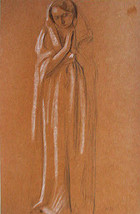
Madonna (sketch for Fiesole Annunciation)

The Annunciation
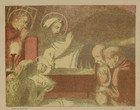
The Nativity
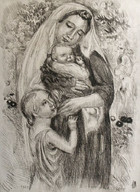
Madonna
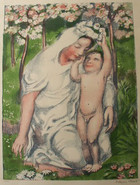
Madonna Crowned
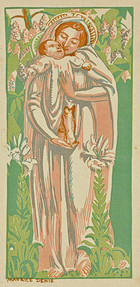
Madonna of the Lilies

On the Terrace
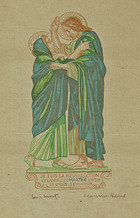
I am the Resurrection
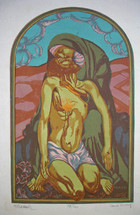
Pieta
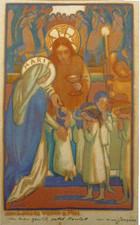
First Communion
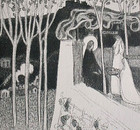
Imitation of Christ (Book 1, Chapter XVII)
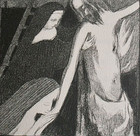
Imitation of Christ (Book 2, Chapter VIII)
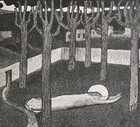
Imitation of Christ (Book 2, Chapter IX)
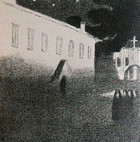
Imitation of Christ (Book 3, Chapter IV)
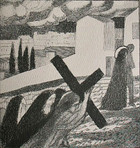
Imitation of Christ (Book 3, Chapter XVIII)
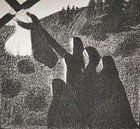
Imitation of Christ (Book 3, Chapter LVI)
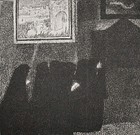
Imitation of Christ (Book 3, Chapter XLI)
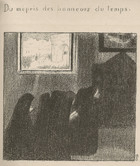
Imitation of Christ (Book 3, Chapter XLI)
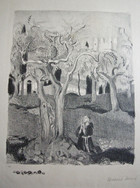
St. Francis in Prayer

Little Flowers (front cover)
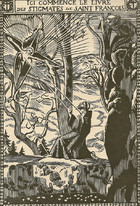
Little Flowers (p. 133)
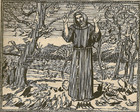
The Little Flowers (p. 39)
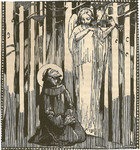
The Little Flowers (p. 150)
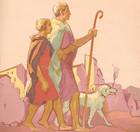
The Book of Tobias (p. 17)
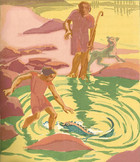
The Book of Tobias (p. 23)
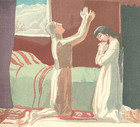
The Book of Tobias (p. 28)
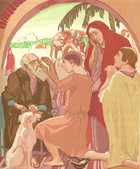
The Book of Tobias (p. 40)
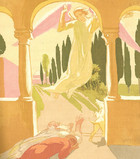
The Book of Tobias (p. 43)
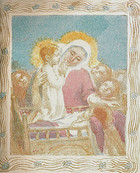
Poemes (frontispiece)
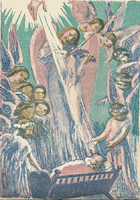
Poemes (p. 12)
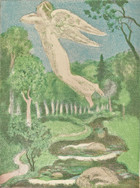
Poemes (p. 50)
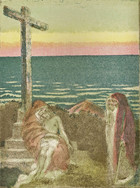
Poemes (p. 84)
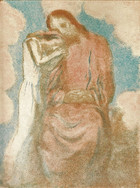
Poemes (p. 102)
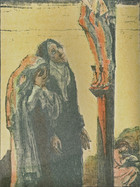
Poemes (p. 125)

Station I

Station V

Station VI

Station X

Station XI

Station XIII

